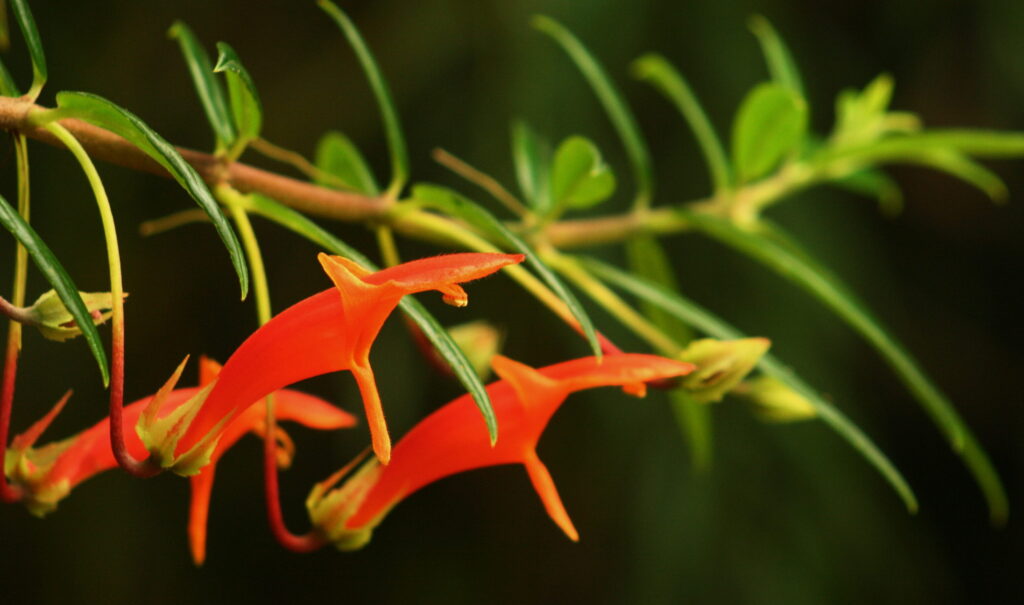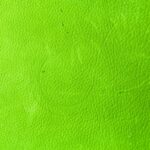
Unveiling the Special Qualities of Dolphin Succulent

The world of succulents is filled with a wide variety of stunning and unique plants, each with its own distinct characteristics. One such plant that has captured the attention of succulent enthusiasts is the Dolphin Succulent, also known as Senecio peregrinus. This fascinating succulent is known for its uncanny resemblance to a pod of leaping dolphins, making it a popular choice among plant lovers looking for something truly extraordinary.
We will delve into the special qualities of the Dolphin Succulent and explore what makes it such a unique addition to any succulent collection. We will discuss its origins, appearance, and care requirements, as well as the different ways it can be propagated and displayed. Whether you are a seasoned succulent enthusiast or just starting your plant journey, this article will provide you with valuable insights and tips to help you appreciate and care for the Dolphin Succulent.
- The Dolphin Succulent is a low-maintenance plant that requires minimal care
- It thrives in bright, indirect sunlight, making it perfect for indoor spaces
- Watering the Dolphin Succulent sparingly is key to prevent root rot
- It can be easily propagated by taking leaf cuttings and allowing them to root
- The unique dolphin-like leaves add a whimsical touch to any plant collection
- The Dolphin Succulent is tolerant to drought and can survive in dry conditions
- It is a slow-growing plant, which means it will maintain its compact size for a long time
- This succulent is an excellent choice for beginners due to its forgiving nature
- The Dolphin Succulent is a conversation starter and a great addition to any home or office
- With proper care, it can live for many years, bringing joy and beauty to its surroundings
- Frequently Asked Questions
The Dolphin Succulent is a low-maintenance plant that requires minimal care
When it comes to adding a touch of uniqueness and charm to your indoor or outdoor space, the Dolphin Succulent is an excellent choice. This plant, also known as Senecio peregrinus, is beloved for its striking resemblance to playful dolphins leaping out of the water. With its distinctive leaf shape and vibrant colors, the Dolphin Succulent is sure to captivate the hearts of plant enthusiasts and nature lovers alike.
Low-Maintenance Marvel
One of the most enticing qualities of the Dolphin Succulent is its low-maintenance nature. This plant thrives in a variety of conditions, making it an ideal choice for both novice and experienced gardeners. Whether you have a green thumb or a busy schedule, the Dolphin Succulent is forgiving and requires minimal care.
Unlike other succulents, the Dolphin Succulent prefers bright but indirect sunlight. This makes it a perfect indoor plant, as it can adapt to different light levels. However, if you choose to place it outdoors, ensure it is protected from harsh, direct sunlight to prevent sunburn.
Furthermore, the Dolphin Succulent has excellent drought tolerance. Its fleshy leaves store water, allowing the plant to survive in dry conditions. This means that you can confidently go on vacation without worrying about your beloved succulent drying out.
Propagation Made Easy
Another remarkable quality of the Dolphin Succulent is its ease of propagation. If you wish to expand your collection or share this delightful plant with friends and family, you're in luck. Propagating the Dolphin Succulent can be as simple as taking a leaf cutting and allowing it to dry for a few days. Once the cut end has calloused over, place it in well-draining soil, mist occasionally, and watch as new roots and shoots emerge.
 Introducing Our Lime Green Succulent: A Perfect Addition!
Introducing Our Lime Green Succulent: A Perfect Addition!Whether you choose to propagate the Dolphin Succulent through leaf cuttings or stem cuttings, success rates are generally high. This makes it a great choice for those looking to experiment with plant propagation or create thoughtful gifts for loved ones.
Embrace the Dolphin Succulent
The Dolphin Succulent is a delightful plant that brings a sense of joy and wonder to any space it graces. Its low-maintenance nature, ease of propagation, and unique appearance make it a standout choice for plant enthusiasts of all levels. So why not add a touch of whimsy to your home or garden by embracing the Dolphin Succulent?
It thrives in bright, indirect sunlight, making it perfect for indoor spaces
The Dolphin Succulent, also known as Senecio peregrinus, is a unique and fascinating plant that has gained popularity among succulent enthusiasts. One of its standout qualities is its ability to thrive in bright, indirect sunlight, making it the perfect addition to any indoor space.
Unlike some other succulents that require direct sunlight for optimal growth, the Dolphin Succulent prefers a spot with filtered or indirect sunlight. Placing it near a window where it can receive bright but indirect light will ensure its proper development.
This adaptable quality makes the Dolphin Succulent an excellent choice for those who do not have access to outdoor gardening spaces or live in areas with limited natural light. It can easily be grown indoors, on a windowsill, or in a well-lit room.
While it is essential to provide the Dolphin Succulent with sufficient light, it is equally important to avoid exposing it to harsh, direct sunlight. Direct sunlight can cause the leaves to scorch and turn brown. Therefore, finding the right balance of light is crucial for maintaining the health and vibrancy of this beautiful succulent.
Additionally, the Dolphin Succulent's ability to thrive in indoor spaces makes it a versatile plant for interior decoration. Its unique leaf formation, resembling leaping dolphins, adds an element of charm and whimsy to any room. Whether placed on a desk, shelf, or as part of a succulent arrangement, this plant is sure to catch the eye and spark conversation.
 Succulent Growth Habits: Tall or Compact?
Succulent Growth Habits: Tall or Compact?It's important to note that while the Dolphin Succulent is relatively easy to care for, it still requires regular attention. Proper watering, well-draining soil, and occasional fertilization are all essential for its overall health and longevity.
The Dolphin Succulent's special quality of thriving in bright, indirect sunlight makes it an excellent choice for indoor spaces. Its adaptability and unique leaf formation make it a captivating addition to any room, adding a touch of natural beauty and intrigue.
Watering the Dolphin Succulent sparingly is key to prevent root rot
The Dolphin Succulent, also known as Senecio peregrinus, is a unique and captivating plant that has gained popularity among succulent enthusiasts. Its leaves resemble tiny dolphins jumping out of the water, hence the name.
One of the most crucial aspects of caring for the Dolphin Succulent is to water it sparingly. This plant is native to South Africa and is accustomed to dry conditions. Overwatering can lead to root rot and ultimately kill the plant.
To ensure the well-being of your Dolphin Succulent, it is recommended to water it only when the soil is completely dry. Insert your finger into the soil up to the first knuckle and if it feels dry, it's time to water. Be cautious not to overwater, as the succulent's fleshy leaves store water and excessive moisture can cause them to rot.
When watering, remember to pour the water directly onto the soil, avoiding the leaves and stem. This will help prevent the risk of fungal diseases and rot. Additionally, make sure the pot has proper drainage to allow excess water to escape.
As a general guideline, during the growing season, which typically spans from spring to summer, you can water your Dolphin Succulent every two to three weeks. However, in winter when the plant goes through dormancy, reduce watering to once a month.
 Top Heat-Loving Succulents: Perfect for Campfire Conditions
Top Heat-Loving Succulents: Perfect for Campfire ConditionsRemember, it's better to underwater than to overwater your Dolphin Succulent. These plants are resilient and can tolerate drought-like conditions, but they cannot survive in waterlogged soil. By providing the right amount of water, you can ensure the health and longevity of your Dolphin Succulent.
It can be easily propagated by taking leaf cuttings and allowing them to root
The Dolphin Succulent, also known as Senecio peregrinus, is a unique and fascinating plant that has gained popularity in recent years. One of the special qualities that sets this succulent apart is its ability to be easily propagated through leaf cuttings.
Propagation is the process of creating new plants from existing ones, and it is a common practice among succulent enthusiasts. The Dolphin Succulent, with its distinct dolphin-shaped leaves, offers a fun and exciting opportunity for propagation.
To propagate the Dolphin Succulent, you can start by gently removing a healthy leaf from the main plant. It is important to choose a mature leaf that is not damaged or diseased, as this will increase the chances of successful propagation.
Once you have a leaf, place it on a clean surface and let it dry for a few days. This step helps to prevent the leaf from rotting when it is planted. After the leaf has dried, you can proceed to the next step.
Prepare a well-draining potting mix, which is essential for the root development of the leaf cutting. You can use a mix specifically designed for succulents or create your own by combining materials like perlite, sand, and potting soil.
 Popular Chalk Stick Succulents: Exploring Varieties and Names
Popular Chalk Stick Succulents: Exploring Varieties and NamesTake the dried leaf and gently press it into the potting mix, burying about half of the leaf. It is important to ensure that the leaf is in contact with the soil for successful root development.
After planting the leaf, water it lightly to settle the soil and initiate the rooting process. Be careful not to overwater, as succulents are prone to root rot if kept in excessively moist conditions.
Place the pot in a bright spot with indirect sunlight. The Dolphin Succulent thrives in bright, indirect light, so avoid placing it in direct sunlight as it can scorch the leaves.
Now, all you have to do is wait and be patient. Over time, the leaf will start to grow roots and eventually develop into a new plant. It is important to note that the process of propagation can take several weeks or even months, so don't be discouraged if you don't see immediate results.
Once the new plant has established roots and grown a few leaves, you can transplant it into a separate pot or incorporate it into a succulent arrangement. Watching your propagated Dolphin Succulent thrive and grow is a rewarding experience that highlights the beauty and resilience of these remarkable plants.
The Dolphin Succulent possesses the special quality of being easily propagated through leaf cuttings. By following the simple steps outlined above, you can enjoy the process of propagating this unique succulent and expand your collection of these delightful plants.
The unique dolphin-like leaves add a whimsical touch to any plant collection
 Succulent Flowers: A Complete Guide to Blooming Beauty
Succulent Flowers: A Complete Guide to Blooming BeautyThe Dolphin Succulent, also known as Senecio peregrinus, is a mesmerizing plant that has gained popularity among plant enthusiasts for its stunning resemblance to a pod of playful dolphins swimming through the ocean. This succulent is a hybrid of two other succulent species, Senecio rowleyanus (String of Pearls) and Senecio articulatus (Candle Plant), which contributes to its distinctive appearance.
The most striking feature of the Dolphin Succulent is its leaves, which are shaped like miniature dolphins leaping out of the water. These leaves are a vibrant shade of green with a smooth, shiny texture, giving them an almost ethereal quality. Each leaf has a pointed tip resembling a dolphin's snout, and as the plant matures, the leaves develop a slightly curved shape, further enhancing the aquatic illusion.
What sets the Dolphin Succulent apart from other succulents is its ability to capture the imagination and bring a sense of whimsy to any plant collection. Whether placed on a windowsill, in a hanging planter, or as part of a succulent arrangement, the playful form of these leaves adds a touch of magic to the surroundings.
Easy Care and Adaptability
Aside from its captivating appearance, the Dolphin Succulent is also cherished for its low-maintenance nature. Like most succulents, it thrives in bright, indirect sunlight and prefers well-draining soil. This plant is native to South Africa and is well-suited to arid conditions, making it highly adaptable to a variety of environments.
The Dolphin Succulent is a drought-tolerant plant, capable of storing water in its leaves and stems. This adaptation allows it to withstand periods of neglect or irregular watering. However, it's important to avoid overwatering, as this can lead to root rot. A moderate watering schedule, allowing the soil to dry out between waterings, is ideal for the health and longevity of the plant.
Propagation and Growth
If you're looking to expand your Dolphin Succulent collection or share its beauty with friends and family, propagation is a simple and rewarding process. The most common method of propagating this succulent is through stem cuttings.
- Select a healthy stem with a few sets of leaves.
- Allow the cutting to callous over for a day or two.
- Place the cutting in well-draining soil and lightly mist it with water.
- Keep the soil slightly moist until roots develop, usually within a few weeks.
- Once the roots have established, treat the new plant as you would a mature Dolphin Succulent.
As the Dolphin Succulent grows, it will gradually produce trailing stems, creating a cascading effect reminiscent of dolphins gracefully leaping out of the water. This growth habit makes it an ideal choice for hanging planters or trailing down from elevated surfaces.
 The Rare Succulent: Uncovering Its Unique Qualities
The Rare Succulent: Uncovering Its Unique QualitiesConclusion: The Dolphin Succulent's unique dolphin-like leaves, easy care requirements, and adaptability make it an enchanting addition to any plant collection. Whether you're a succulent aficionado or a beginner plant parent, this whimsical succulent is sure to captivate your heart with its magical appearance.
The Dolphin Succulent is tolerant to drought and can survive in dry conditions
The Dolphin Succulent, also known as Senecio peregrinus, is a unique and fascinating plant that has captured the attention of succulent enthusiasts around the world. One of its most remarkable qualities is its exceptional tolerance to drought and ability to thrive in dry conditions.
This succulent has adapted to arid environments by developing specialized leaves that resemble the shape of leaping dolphins, hence its name. These dolphin-shaped leaves serve as water reservoirs, allowing the plant to store moisture for extended periods and withstand long periods of drought.
Unlike many other succulents, the Dolphin Succulent has a natural ability to conserve water, reducing its water requirements significantly. This makes it an ideal choice for those living in regions with limited rainfall or for individuals who may frequently forget to water their plants.
Not only does the Dolphin Succulent have the ability to survive in dry conditions, but it also has a unique aesthetic appeal. The dolphin-shaped leaves, which are often gray-green in color, add a touch of whimsy and playfulness to any succulent collection or garden.
In addition to its drought tolerance, this succulent also possesses strong roots that help it anchor firmly in the soil. These strong roots enable the plant to withstand windy conditions and prevent it from toppling over or getting damaged easily.
Overall, the Dolphin Succulent is a resilient and visually captivating plant that brings a sense of wonder to any garden or indoor space. Its ability to thrive in dry conditions and its charming dolphin-shaped leaves make it an irresistible choice for succulent enthusiasts and plant lovers alike.
 Best Sun-loving Succulents for Tokyo: Top Choices & Tips
Best Sun-loving Succulents for Tokyo: Top Choices & TipsIt is a slow-growing plant, which means it will maintain its compact size for a long time
The Dolphin Succulent, also known as Senecio Peregrinus, is a fascinating plant that possesses several special qualities. One of its most unique features is its slow-growing nature, which sets it apart from many other succulents.
This slow growth rate is advantageous for several reasons. Firstly, it means that the Dolphin Succulent will maintain its compact size for a long time, making it an ideal choice for those who have limited space or prefer smaller plants. Its petite stature makes it a perfect fit for tiny planters, terrariums, or even as a desk companion.
Furthermore, the slow growth rate of the Dolphin Succulent allows it to retain its distinctive dolphin-shaped leaves for an extended period. These leaves resemble leaping dolphins, with their curved shape and pointed ends. The intricate pattern and vibrant green color of the leaves add an element of uniqueness to any indoor or outdoor space.
With its slow-growing nature, the Dolphin Succulent also requires less frequent maintenance compared to other succulents. This makes it an excellent choice for those who lead busy lives or may not have a green thumb. Despite its low maintenance requirements, the Dolphin Succulent still thrives in bright, indirect sunlight and well-draining soil.
In addition to its slow growth rate, the Dolphin Succulent is known for its ability to produce delicate white flowers when it reaches maturity. These small, star-shaped blooms add a touch of elegance to the plant and are a delightful surprise for any plant enthusiast.
Overall, the slow-growing nature of the Dolphin Succulent makes it a highly desirable plant for both beginners and experienced succulent enthusiasts. Its compact size, unique dolphin-shaped leaves, low maintenance requirements, and occasional white blooms make it a captivating addition to any plant collection.
 Large and Lush: Discover the Succulents that Grow to Impressive Sizes
Large and Lush: Discover the Succulents that Grow to Impressive SizesThis succulent is an excellent choice for beginners due to its forgiving nature
If you're new to the world of succulents and looking for an easy-to-care-for plant, the Dolphin Succulent is the perfect choice for you. Its forgiving nature makes it an ideal option for beginners who are still learning the ropes of succulent care.
The Dolphin Succulent, also known as Senecio peregrinus, is a unique and visually striking succulent that resembles leaping dolphins. Its leaves are curved and have pointed tips, resembling the shape of a dolphin's fin. This distinctive feature adds a touch of whimsy and charm to any succulent collection.
One of the standout qualities of the Dolphin Succulent is its ability to adapt to different light conditions. While it thrives in bright, indirect sunlight, it can also tolerate lower light levels. This makes it a versatile plant that can be placed both indoors and outdoors, making it an excellent choice for those who may not have access to direct sunlight.
In terms of watering, the Dolphin Succulent is relatively low-maintenance. It has moderate water needs and prefers well-draining soil. As with most succulents, it's important to allow the soil to dry out between waterings to prevent overwatering, which can lead to root rot. A good rule of thumb is to water the plant when the top inch of soil feels dry.
Furthermore, the Dolphin Succulent has a natural ability to store water in its leaves, making it more drought-tolerant than other plants. This means that even if you accidentally forget to water it for a few days, it will likely bounce back without any issues.
Another benefit of the Dolphin Succulent is its resilience to pests and diseases. While no plant is entirely immune to pests, this succulent is known for being relatively resistant to common succulent pests, such as mealybugs and aphids. This reduces the likelihood of having to deal with infestations or diseases, making it a hassle-free choice for beginners.
 Explore Unique and Stunning Succulent Plants with Striking Names
Explore Unique and Stunning Succulent Plants with Striking NamesOverall, the Dolphin Succulent is a standout choice for beginners due to its forgiving nature. Its unique appearance, adaptability to different lighting conditions, low-maintenance watering requirements, and resilience to pests and diseases make it an excellent addition to any succulent collection. So why not dive into the world of succulents with the charming Dolphin Succulent?
The Dolphin Succulent is a conversation starter and a great addition to any home or office
The Dolphin Succulent, also known as Senecio peregrinus, is a unique and captivating plant that has gained popularity among succulent enthusiasts. Its distinctive leaf shape resembles a pod of playful dolphins leaping out of the water, making it a conversation starter and a great addition to any home or office.
1. Eye-catching Appearance
One of the main reasons why the Dolphin Succulent stands out is its eye-catching appearance. The leaves are thick and fleshy, with a vibrant green color and a unique shape that resembles miniature dolphins. This succulent is a true marvel of nature, attracting attention and sparking curiosity wherever it is displayed.
2. Low Maintenance
For those who appreciate the beauty of plants but have a busy lifestyle, the Dolphin Succulent is the perfect choice. It is a low-maintenance plant that requires minimal care. This succulent is drought-tolerant and can survive in various light conditions, making it suitable for both indoor and outdoor environments.
3. Versatility in Arrangements
The Dolphin Succulent is highly versatile when it comes to arrangements. It can be planted in individual pots, hanging baskets, or even incorporated into larger succulent gardens. Its unique shape adds a touch of whimsy to any arrangement, making it a favorite among creative gardeners and plant enthusiasts.
4. Symbolism and Meaning
Beyond its aesthetic appeal, the Dolphin Succulent also carries symbolism and meaning. Dolphins are often associated with joy, playfulness, and intelligence. Having a Dolphin Succulent in your space can bring a sense of positivity and happiness. It serves as a reminder to embrace the joy of life and to approach challenges with intelligence and grace.
 Best Tall-Leafed Succulents for Indoor Thriving: A Guide
Best Tall-Leafed Succulents for Indoor Thriving: A Guide5. Propagation and Expansion
If you fall in love with the Dolphin Succulent and want to expand your collection or share it with others, you're in luck. This succulent is relatively easy to propagate through stem cuttings or leaf cuttings. With proper care, you can quickly grow a thriving collection of Dolphin Succulents to enjoy or gift to fellow succulent enthusiasts.
In Conclusion
The Dolphin Succulent is a truly special plant that deserves recognition for its unique qualities. Its eye-catching appearance, low maintenance requirements, versatility in arrangements, symbolism and meaning, and ease of propagation make it a must-have for any succulent lover. Consider adding a Dolphin Succulent to your home or office space and let its charm and beauty brighten up your surroundings.
With proper care, it can live for many years, bringing joy and beauty to its surroundings
The Dolphin Succulent, also known as Senecio peregrinus, is a visually stunning plant that has gained immense popularity among plant enthusiasts in recent years. Its unique leaf shape resembling leaping dolphins makes it an exquisite addition to any indoor or outdoor space.
One of the special qualities of the Dolphin Succulent is its ability to thrive with proper care and attention. With the right conditions, this succulent can live for many years, bringing joy and beauty to its surroundings.
Proper Care Tips for Dolphin Succulent
- Light: Dolphin Succulents prefer bright, indirect sunlight. Place them near a window where they can receive ample light without being exposed to direct sunlight for extended periods.
- Watering: As with most succulents, it is crucial to avoid overwatering the Dolphin Succulent. Allow the soil to dry between waterings and only water when the top inch of soil feels dry to the touch.
- Soil: Well-draining soil is essential for the Dolphin Succulent's overall health. Mix regular potting soil with sand or perlite to ensure proper drainage and prevent root rot.
- Temperature: This succulent thrives in temperatures between 60-75°F (15-24°C). Protect it from extreme cold or heat, as it may cause damage to the plant.
- Fertilizer: Use a balanced, water-soluble fertilizer specifically formulated for succulents. Apply the fertilizer sparingly during the growing season, usually from spring to summer.
With these care tips in mind, the Dolphin Succulent can flourish and display its unique beauty for an extended period. It is a low-maintenance plant that adds a touch of whimsy to any collection or space, making it a favorite among succulent enthusiasts.
Whether you're a seasoned plant parent or just starting your succulent journey, the Dolphin Succulent is sure to captivate and impress with its extraordinary qualities. Add this delightful succulent to your collection and enjoy the joy it brings to your space.
Frequently Asked Questions
1. What is a Dolphin Succulent?
A Dolphin Succulent, also known as Senecio Peregrinus, is a unique succulent plant that resembles a jumping dolphin due to its curved leaves.
2. How do I care for a Dolphin Succulent?
Dolphin Succulents require bright indirect sunlight, well-draining soil, and minimal watering. They are relatively low-maintenance plants.
3. Can Dolphin Succulents be grown indoors?
Yes, Dolphin Succulents can be grown indoors as long as they receive adequate sunlight and are placed near a window or under grow lights.
4. How often should I water my Dolphin Succulent?
Dolphin Succulents should be watered sparingly, allowing the soil to dry out completely between waterings. Overwatering can lead to root rot and other issues.
If you want to read more articles similar to Unveiling the Special Qualities of Dolphin Succulent, you can visit the Varieties and Colors category.






You Must Read